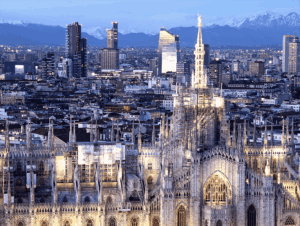Italy remains a perennial draw for American buyers, offering unparalleled lifestyle and stability. However, converting that romantic appeal into a sound investment requires a deep understanding of the unique market dynamics and legal hurdles. For the sophisticated investor looking beyond holiday rentals, the contrasting markets of Milan and Florence present distinct, high-value opportunities.
At Columbus International, we specialize in bridging the gap between the US and Italian real estate landscapes. As our Founder and CEO, Richard Tayar, notes, “Italy offers stability and prestige, but the entry process is highly specialized. Success hinges on precise financial structuring and local expertise.”
Two Cities, Two Investment Strategies
Milan and Florence—often viewed simply as cultural hubs—function as two entirely different investment engines. A prudent investor should weigh their goals (capital appreciation vs. immediate yield) when choosing between them.
Milan: The Financial Powerhouse
Milan is Italy’s economic and financial capital, offering an investment profile akin to major global cities like London or Paris.
- The Investment Thesis: The market is driven by commerce, technology, and luxury fashion. Investors here focus on high rental yields from corporate leases, short-term business rentals, and the high-end luxury segment (e.g., apartments near the Quadrilatero della Moda).
- The Opportunity: Demand for modern, professional housing is consistently high, particularly from multinational corporations. New construction and modernized existing properties often command significant premiums. Capital appreciation tends to be steady and less reliant on volatile tourism.
Florence: The Timeless Asset
Florence is the epicenter of Renaissance art, making its property market deeply rooted in heritage and global tourism.
- The Investment Thesis: This is primarily a long-term capital appreciation play, driven by scarcity. The city strictly limits new construction and preserves its historic core, ensuring that centrally located properties hold their value. The short-term rental market (tourism) is robust, providing strong seasonal yields.
- The Opportunity: Highly sought-after properties, particularly those in the Oltrarno or near the Duomo, act as generational assets. Investors often target properties that blend modern amenities with historic character, catering to wealthy international tourists and academics.
Navigating the Legal and Financial Labyrinth
The Italian real estate process is markedly different from the U.S. system. American investors must be prepared for mandatory steps and a highly bureaucratic environment.
1. The Fiscal Code and Bank Account
Before you can even sign an offer, you must obtain an Italian Codice Fiscale (Fiscal Code), which is required for all financial transactions, including property ownership. It is also essential to open an Italian bank account to handle utility payments, taxes, and final closing funds.
2. The Power of the Notaio
In Italy, the Notaio (Public Notary) is a mandatory, government-appointed public official—not merely a lawyer. Their role is to ensure the legitimacy of the deed, verify title, and collect and pay the necessary taxes on behalf of the buyer and seller.
- Investor Takeaway: While the Notaio protects both parties, investors must hire their own independent legal counsel who specializes in international real estate to advise on contracts, tax implications, and due diligence specific to an American investor.
3. Understanding Property Taxes
Italian purchase taxes are based on a declared value (valore catastale) and can be complex, often ranging from 2% to over 10% of the declared value, depending on whether you are buying from a private individual or a company, and whether the purchase is for a primary residence or an investment property.
- Ongoing Taxes: Owners are subject to the annual IMU (property tax), though the rates vary by municipality and property status. Careful structuring is vital to minimize tax exposure both in Italy and back home in the U.S.
Financing and Currency Risk
Most U.S. investors find obtaining an Italian mortgage to be cumbersome. Italian banks typically require significant down payments (up to 50%) and have extensive underwriting requirements.
- The Cash Advantage: The majority of successful American investors purchase Italian property with cash, often leveraging U.S. assets or lines of credit. This simplifies the purchase process and makes an offer more competitive, particularly in highly desirable markets like Florence.
- Currency Risk: An investment in Euros means the asset’s value, when converted back to US Dollars, is subject to the EUR/USD exchange rate. A professional strategy must account for this volatility when calculating returns.
The Essential Partner for Seamless Entry
The distinction between a successful Italian real estate investment and a prolonged headache is often determined by the quality of your local team. The complexity of navigating local planning laws, securing optimal financing, and ensuring cross-border tax compliance requires expertise far beyond a typical local agent.
For over 15 years, Columbus International has served as the crucial bridge for American investors. Our team of knowledgeable experts and brokers operates around the clock to provide certainty in a complex market.
Before taking the leap, ensure your team provides:
- Dual Market Expertise: Proficiency in both U.S. investment standards and Italian law.
- 24/7 Support: Access to brokers who can act on time-sensitive opportunities in the European timezone.
- End-to-End Execution: From securing the Fiscal Code to liaising with the Notaio and coordinating the final deed.
As Richard Tayar advises, “The opportunities in Milan and Florence are exceptional, but they are gated by bureaucracy. Our value is in demystifying that gate, allowing the American investor to focus solely on the financial potential.”
Want to know more? Contact us today: info@columbusintl.com



